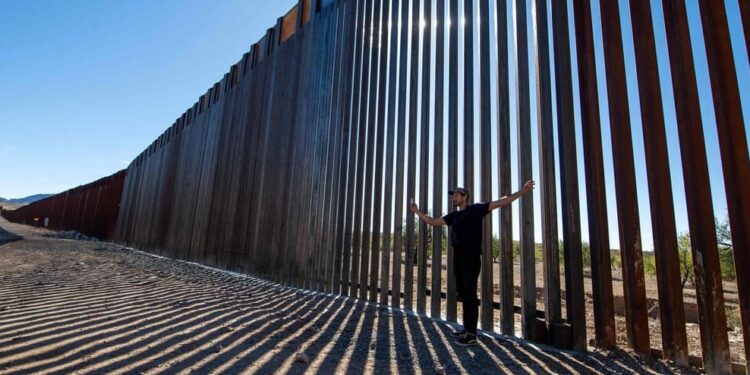Jaguars certainly have no concept of borders, but along the border separating the United States from Mexico, these big cats must adapt.
• Read also: The planet which has never been as hot as in 2023 has never consumed so much coal
Once master of the plains of the Sonoran Desert in Arizona, the jaguar now struggles to survive in a landscape cut in two by a metal wall.
The obstacle, which former President Donald Trump touted as being “insurmountable,” actually has little effect in discouraging the daily influx of thousands of migrants.
But according to wildlife experts, by hindering the mobility of animals, this barrier has disastrous consequences for wildlife.
AFP
“One of the most important things for ecosystem health is habitat connectivity,” explains Laiken Jordahl of the NGO Center for Biological Diversity.
“Animals need to roam, find food, water, partners. “That they have large connected areas is essential,” he adds.
AFP
“Vulnerable”
Despite a few gaps, the rusty-looking metal fence stretches for miles, up to nine meters high at the southern tip of the Buenos Aires National Wildlife Refuge, a 47,000-hectare reserve for animal and plant species endangered in Arizona.
AFP
It marks the end of the territory of the United States, but not that of dozens of species such as the American antelope, the mule deer, the lynx, the puma, or even the jaguar.
“This wall will clearly cut off this entire ecosystem from all wild lands in Mexico, which will make the animals on each side (of the wall) more vulnerable to droughts, climate change, and inbreeding,” asserts Laiken Jordahl.
The barrier “greatly affects migrations (of animals) from north to south and from south to north,” Mexican José Manuel Perez, of the Cuenca los Ojos association, which studies animal movements, reported to AFP in October. in the area with surveillance cameras.
AFP
A herd of wild boars dependent on water sources on the American side, for example, “tried to cross for five hours” the border wall, he explained at the time.
Scientists estimate the number of jaguars on the Mexican side at 150, while the feline has only been seen rarely on the American side in recent decades.
“A single jaguar can cover hundreds or even thousands of hectares, they can walk hundreds of kilometers in the space of a few days,” emphasizes Laiken Jordahl.
AFP
“Jaguars are approaching Arizona from (the Mexican state of) Sonora, but many find themselves opposed to a strong border wall,” he adds.
“Irreparable”
The physical barrier between the United States and Mexico was built over several decades on portions of the 3,000 km-long border to combat illegal immigration.
But it was under Donald Trump that this wall was truly extended. His administration repealed rules meant to mitigate the wall’s environmental damage, causing “irreparable” damage to nature reserves and indigenous territories, according to a report released in September by a parliamentary government audit agency.
For Laiken Jordahl, this hasty construction undermined several years of environmental preservation efforts, during which the federal government spent “hundreds of millions of dollars”, notably to see the return of animals like the gray wolf of Mexico and the jaguar.
“They’re undermining all of those goals by building impermeable structures,” he says.
Joe Biden paused wall expansion upon arriving at the White House in 2021, but last October his administration authorized the closing of some gaps in the wall, primarily in Arizona.
“We are gradually unraveling the patchwork” that this ecosystem represents on the border between the two countries, believes Laiken Jordahl.
“It’s only a matter of time before it starts to collapse.”



